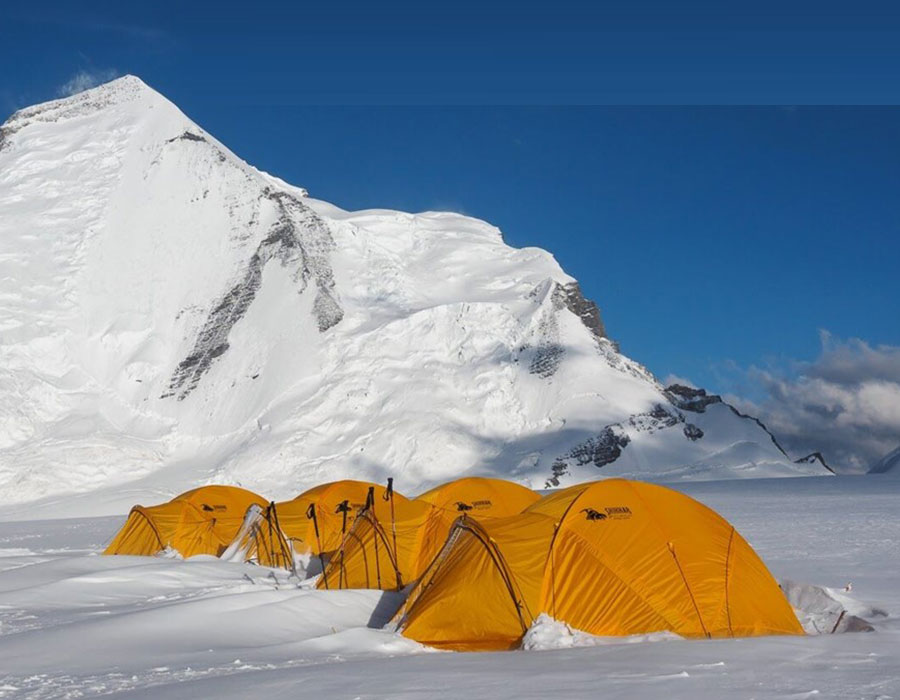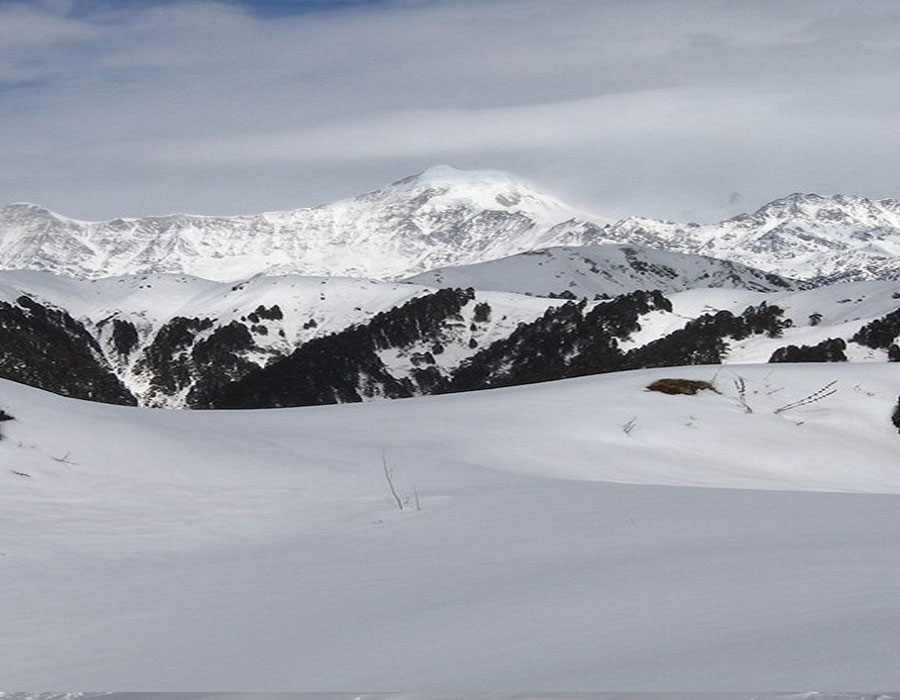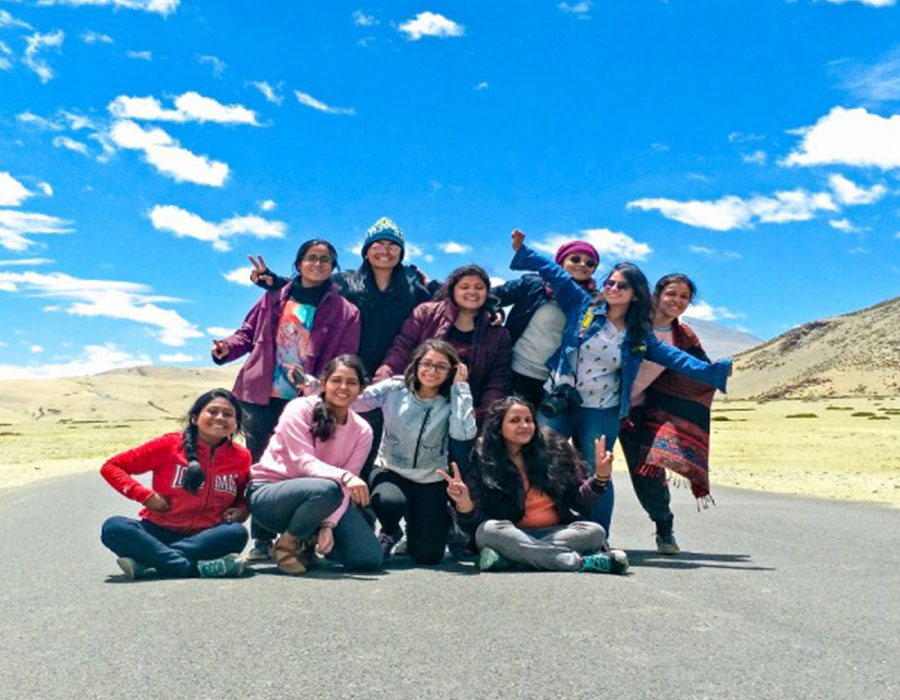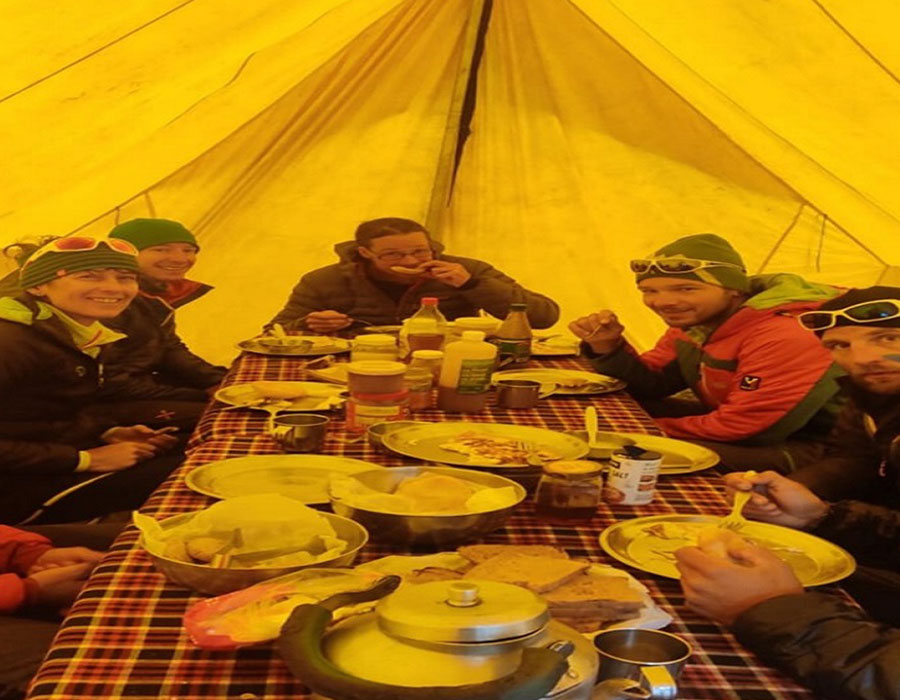Descriptions
To practice mountaineering means mastering both physical and mental strengths to perform the thrilling combination of height exploration and mountain challenge management. No successful mountaineering achievement is possible without physical power and mental endurance together with methodical understanding and precise techniques. The Basic Mountaineering Course (BMC) provides organized training as the perfect starting point for people interested in this field.
Shikhar Travels Pvt. Ltd. stands as a premier organization in India for mountaineering training since it started providing adventure training more than forty years ago. The Basic Mountaineering Course (BMC) taught by Shikhar Travels Pvt. Ltd. delivers vital mountain knowledge and teaching to make climbing enthusiasts better understand mountain conditions while learning key skills necessary for successful mountaineering ventures. The Basic Mountaineering Course (BMC) represents what training program looks like.
The Basic Mountaineering Course teaches fundamental skills to safety practice and effective mountaineering through its structure developed for new mountaineers. Students receive theoretical information in addition to practical training experiences during the course. Through the necessary climbing techniques, participants learn rope skills with equipment handling as well as safety measures while developing practical mountaineering experience. The mountaineering foundation serves anyone pursuing professional mountaineering work and recreational climbers who want trained safety performance.
Shikhar Travels Pvt. Ltd. provides its Basic Mountaineering Course in Gangotri Garhwal Himalayas, where natural beauty meets demanding mountain landscapes to create an ideal learning environment. Participants receive 12 days along with 11 nights to learn the fundamental mountain expedition skills through this training program.
What Does the Basic Mountaineering Course Cover?
The structured program of the mountaineering training equips participants with essential mountaineering fundamentals and comprehensive knowledge about the safety risks faced when participating in the sport. This section provides sequential details of the essential lessons taught during the course.
1. Physical Fitness and Preparation
Every day commences with exercises that include warming up followed by stretching, yoga, and running activities. Body preparation that helps people cope with mountain climbing physical requirements starts with these fundamental exercises. Physical preparation emerges as an initial priority at the course since it enables participants to deal with fatigue properly during extended treks and climbs.
2. Mountaineering Equipment
The course focuses on making students experts in everything related to mountaineering equipment. The course will provide comprehensive training about multiple climbing equipment items which include:
-
Ropes and knots: The course teaches essential knots by instructing students about figure-of-eight knot and double fisherman’s knot.
-
Crampons and ice axes: Glacier climbers need both crampons and ice axes as essential artifacts for their mountainside activities.
-
Climbing boots, helmets, and harnesses: Climbing boots together with helmets and harnesses require proper training on correct fit and usage techniques.
-
Rope techniques: The course includes rope training for proper handling with belaying and rappelling skills and techniques.
All training sessions focus on developing necessary skills for proper usage of equipment which promotes safety as well as efficiency for participants.
3. Trekking and Navigation
Trekking stands as a mandatory training aspect. Several trekking aspects form part of the educational program, which includes:
-
Trekking in different terrains: The participants will experience trekking on different surfaces which consist of rocky terrain with glacier regions and snow-covered trails.
-
Navigation: Learning to map out routes through mountains that involves compass usage together with GPS and map reading skills constitutes navigation expertise.
-
Campsite selection: The training teaches learners to select campsites based on weather conditions and altitude as well as terrain characteristics.
4. Climbing Techniques
Learned climbing techniques are essential for effective accomplishment in both mountain climbing and mountaineering sports. The BMC involves:
-
Rock climbing: The training includes rock climbing aspects such as bouldering techniques in addition to anchor placement knowledge and experience in both belaying and rappelling methods.
-
Glacier climbing: Training about glacier movements includes crampon techniques with ice axe skills and basic rescue protocols for glacier terrain.
-
Ice and snow techniques: Students learn ice and snow techniques to climb through mountain areas covered with snow and ice because these conditions create their own set of demanding obstacles.
5. Safety Protocols and First Aid
Standards of safety take priority in mountaineering education because the program teaches individuals both risk reduction techniques and emergency response skills. Topics covered include:
-
Mountain safety: Students will learn to control and handle mountain-based medical perils such as altitude sickness, hypothermia, frostbite, and additional threats.
-
First aid training: First aid education includes fundamental lifesaving techniques that ensure participants help others in case of medical emergencies when participating in expeditions.
-
Emergency rescue: The training covers participant self-rescue methods in addition to methods for performing rescues with climbing equipment on others.
6. Acclimatization and Mountain Terminology
Understand the importance of acclimatization due to the mountain activities that mostly occur at high altitudes. The course provides:
-
Acclimatization training: The training takes place across different heights to enable your body to adjust to reduced pressure levels and minimal oxygen availability.
-
Mountain terminology: Understanding mountain terminology consists of learning summit, base camp, crevasse, ridge, and icefall definitions.
7. Group Dynamics and Leadership Skills
People who participate in mountaineering adventures usually keep teams, so this course teaches the art of productive group work.
-
Leadership: Leadership skills obtain crucial importance throughout the course because they enable individuals to guide fellow mountaineers during demanding climbs.
-
Teamwork: Basic mountaineering training includes lessons on effective resource sharing and teamwork communication along with member support.
Program
Day 1: Arrival at Uttarkashi
The mountaineering course starts as participants reach Uttarkashi to meet instructors who introduce the program to them before night falls. Students stay in tents during their first night as the instructors explain the program rules while giving essential guidelines.
Day 2-4: Training at Uttarkashi
The training schedule over these days includes extensive practice with knots and mountain climbing activities and rope-related tasks, as well as bouldering and rappelling. The participants obtain specialized wall-climbing expertise at the Nehru Institute of Mountaineering (NIM) during their visit.
Day 5: Trek to Bhojbasa
The journey moves ahead to Bhojbasa through demanding terrain that exposes people to important lessons about establishing mountain camps and campsite positioning choices in mountainous regions. Acclimatization forms a crucial part within this portion of the course.
Day 6-7: Gaumukh and Tapovan
The training leads participants to Gaumukh and Tapovan through which they acquire glacier skills to utilize crampons and ice axes while handling ropes on icy and snowy areas.
Day 8-9: Glacier Training
A total of eight training hours during the course teach participants how to use their skills correctly both while ascending and descending and self-rescuing on actual glaciers.
Day 10-11: Return Trek
The participants make their journey back through Tapovan to Bhojbasa while returning to Gangotri. The participants review all learned material by practicing as well as glacier techniques alongside mountain safety protocols during the return journey.
Day 12: Certification and Departure
The participants receive a debriefing along with achievement acknowledgment during the last day of training. The successful completion of the Ganga course leads to receiving a Certificate of Completion.
Essential Tips for Mountaineering Success
-
Conduct Early Preparation by Doing Traditional Endurance-Based and Strength-Based Training.
-
Buy equipment that includes top-quality boots together with gloves and climbing gear.
-
Students need to master basic rope skills, which include knot tying and belaying techniques, and rappelling.
-
Before climbing, check the current conditions of mountain weather through accurate updates.
-
Proper acclimation requires spending enough time at higher elevations.
-
A backpack with well-planned organization should contain your necessary items only.
-
Safe practices take precedence together with correct equipment usage.
-
Even in difficult circumstances, mental resilience enables you to remain composed, focused, and optimistic.
-
Agree to first aid training since you must know how to treat both injuries and altitude sickness conditions.
-
Teamwork Equates to Safety Through Effective Communication and Mutual Support.
Conclusion
Shikhar Travels Pvt. Ltd. provides through its Basic Mountaineering Course a premium platform that enables people excited about adventure to embark on their mountaineering adventure. Academic expertise combined with detailed educational programs under the backdrop of Garhwal Himalayas enables participants to develop vital mountain skills which they can use in their upcoming outdoor adventures.
Every individual seeking mountain climbing or trekking in the mountains benefits from the essential training foundation provided by the BMC.
Price & Inclusions
74600
Inclusion Details
- Accommodation on sharing basis in Shikhar nature resort Uttarakshi and Mandakni hotel Gangotri
- Transportation from Uttarkashi to Gangotri and Uttarkashi to Gangotri
- All meals, as mentioned in the program
- Accommodation in tents on sharing basis during trekking
- Training of wall climbing at NIM
- Firefighting training exercises
- Glacier Training i.e snow and Ice craft
- Services of the instructor or mentor during the program
- Services of Cook and Kitchen staff during trekking
- First aid kit with Oxygen Cylinder
- Camping fee, permit charges, training fee for the trek and training
- Transportation for Kitchen and common equipment from Gangoti to Base camp and back to base camp by porters
- Personal Equipment for training, i.e., seat harness, carabiners, jumar, descender, Helmet, Boots, boots, ice axe, gaiter, crampon, Rope sling, Sleeping bag, Mattress
- All current taxes, including the government service tax of 5%
- Certificate of BMC approved by Shikhar Travels
Exclusion
Price doesn't include:
- Carriage and transport of member equipment and luggage from Gangoti to Base camp and back to base camp
- Personal clothing for training and trekking
- Services of any personal porter
- Personal expenses such as table drinks, room’s services items, laundry, telephone calls at hotels or trips, etc.
- Any additional expenses caused by or liability for disturbance in trip program due to or circumstances such as weather conditions, sickness, natural disasters, riots, etc.
- Liability for or insurance against injury, loss of life, accidents, or loss of goods. Camera Fees



























